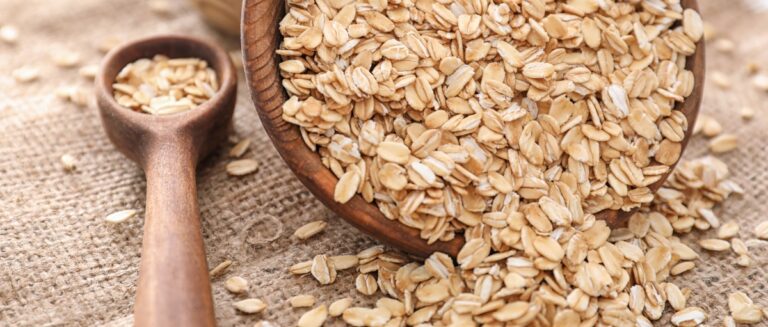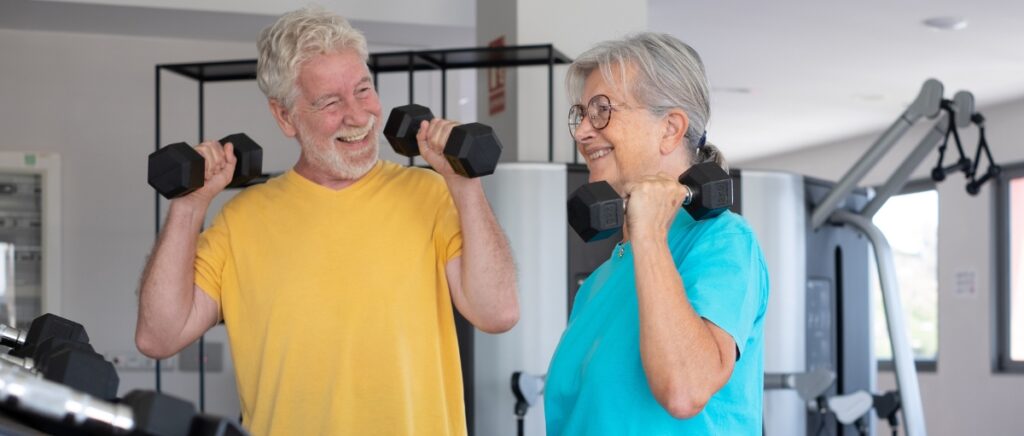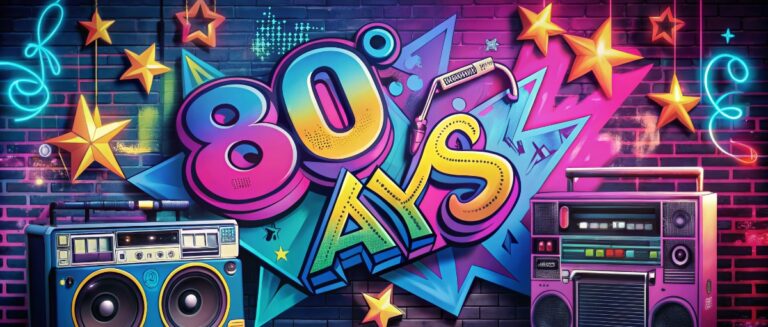As we age, staying active becomes more important than ever for maintaining our health, mobility, and independence. But for many seniors, getting regular exercise can feel challenging, and you may think it’s too late to begin working out, with a wide array of exercise equipment overwhelming you. You may have achy joints, balance issues, or simply lack the motivation to trek to the gym every day.
The good news is that with the right equipment, you can create a safe, effective workout routine right in the comfort of your own home.
With so many types of home exercise equipment available, it can be tough to know where to start. That’s where this Ultimate Guide comes in. We’ve researched and gathered all the information you need to choose the best exercise equipment for your individual needs and goals.
No matter your age or fitness level, you have the power to take control of your health through exercise. With the right equipment and a little know-how, you’ll be well on your way to a stronger, more mobile, more vibrant version of yourself. So let’s get started!
Why Exercise Is Crucial for Seniors
Think exercise is just for the young? Think again. Research shows that staying active is vital for maintaining health and quality of life as we age. In fact, regular physical activity can be a powerful tool for preventing and managing many of the chronic conditions we may face in our senior years.
Preserving Mobility and Independence
One of the biggest benefits of exercise for seniors is its ability to help preserve mobility and independence. As we age, we naturally lose muscle mass and strength, a process known as sarcopenia. In fact, studies show that physically inactive people can lose as much as 3% to 5% of their muscle mass per decade after the age of 30.
However, regular exercise can help combat sarcopenia by building and maintaining lean muscle. This is crucial for maintaining the strength and stamina needed for everyday activities, such as climbing stairs, carrying groceries, and playing with grandchildren.
Exercise can also significantly improve balance and reduce the risk of falls—a major concern for older adults. According to the CDC, falls are the leading cause of injury and death among seniors. However, research has found that exercise programs focusing on balance and strength training can reduce the risk of falls by up to 34%.
Boosting Overall Health
In addition to preserving functional abilities, exercise delivers powerful health benefits for seniors:
- Strengthens bones and muscles: Weight-bearing and resistance exercises help maintain bone density and prevent osteoporosis, reducing the risk of fractures and disability.
- Boosts mood and brain function: Endorphins released during exercise can help alleviate symptoms of depression and anxiety that are common in older adults. Exercise also boosts cognitive function and may reduce the risk of dementia.
- Lowers disease risks: Regular physical activity helps lower blood pressure, control blood sugar, and reduce inflammation throughout the body. This translates to lower risks of chronic conditions like heart disease, diabetes, arthritis, and some cancers.
The Best Types of Exercise Equipment for Seniors
Ready to start building your home gym? With so many types of exercise equipment on the market, it can be overwhelming to know where to begin. Here’s a breakdown of the top categories and equipment types that are best suited for seniors, along with guidance on their benefits and features to look for.
Cardio Equipment
Cardio exercise gets your heart pumping and improves stamina and lung capacity. Look for equipment that’s easy on the joints, especially if you have arthritis or injuries.
Here are a few options:
- Elliptical machines: These provide a low-impact cardio workout that’s easy on the knees, hips, and ankles. They offer a smooth, fluid motion and have stationary handles for stability. Look for models with large, textured foot pedals to prevent slips and adjustable resistance levels to customize your workout intensity.
- Stationary bikes: These exercise bikes are available in upright and recumbent (laid-back) styles. Recumbent bikes have a lower seat with back support, making them easier to get on and off. They’re a great option if you have balance issues or limited mobility. Features to look for include adjustable seats and handlebars, padded backrests, and built-in fans or water bottle holders.
- Treadmills: Treadmills allow you to walk or jog in a controlled environment, free from outdoor hazards like uneven pavement or bad weather. They can be a good choice if you have a decent balance and want a workout that mimics real-world movements. However, they may not be the best choice if you’re unsteady on your feet. Safety features to prioritize include sturdy handrails, large buttons, and an auto-stop clip that you can attach to your clothing to stop the belt if you slip or drift too far back on the deck.
In addition to standard stationary bikes, indoor equipment, and machines, consider exploring outdoor bikes for seniors that are specifically designed for enhanced stability and comfort. These bikes often feature lower step-through frames and ergonomic seating tailored to older riders.
For those who enjoy outdoor exercise, specialized bicycles for the elderly can offer both a scenic ride and a low-impact cardiovascular workout, helping to maintain mobility and independence.
Strength Training Equipment
Strength or resistance training helps build and maintain muscle mass, which is crucial for preventing frailty and maintaining mobility as one ages. It also strengthens the upper body, bones, and ultimately boosts metabolism.
Here are a few options:
- Resistance bands: These are stretchy latex or fabric bands that provide resistance as you push or pull against them. They’re an inexpensive, portable, and versatile way to strength train. You can use them for a full-body workout or to target specific muscle groups while seated or standing. They come in various resistance levels, so you can progress as you get stronger.
- Dumbbells and kettlebells: Free weights challenge your muscles and are great for targeted strength exercises. The weight is not attached to anything, so your muscles have to work to stabilize each movement. This helps build functional strength but requires good form to avoid injury. If you have grip or balance problems, use caution with free weights or stick to lighter weights.
- Weight machines: Usually found at gyms, these provide more stability and controlled motion than free weights. Some have seated positions to reduce balance concerns. A home gym machine like a Bowflex can provide a similar effect in a smaller footprint by using rods or cables for resistance. However, large home machines can still be quite pricey.
Beyond free weights and resistance bands, exercise machines for seniors provide a controlled and safe environment for strength training. These machines typically offer adjustable resistance settings that can be tailored to individual fitness levels.
Flexibility and Balance Equipment
Maintaining flexibility and balance is key for reducing stiffness, preventing falls, and making everyday movements easier.
Here are a few options:
- Yoga mats: These provide cushioning and support on the floor for stretches, yoga poses, or Pilates exercises. Look for textured, non-slip surfaces and adequate padding for your joints.
- Foam rollers: Firm, cylindrical pieces of foam that can be rolled over muscles to release tension and stiffness. They come in various sizes and densities. Start with a softer roller if you’re new to foam rolling or have very tight muscles.
- Balance trainers: Trainers like BOSU balls, balance discs, or wobble cushions create an unstable surface. Simply standing on them engages your core and leg muscles to maintain balance. As you improve, you can progress to doing exercises on the equipment for an added challenge.
- Suspension trainers: Trainers such as the TRX system use your body weight for resistance. You perform exercises while holding onto straps with your hands or feet to work your muscles and improve stability. They provide a good full-body workout but require a decent baseline of strength and balance to use safely.
Keep in mind that while this guide covers some of the most popular and useful types of home exercise equipment for seniors, there’s no one-size-fits-all solution. The best exercise equipment for you will depend on your unique fitness level, goals, and health considerations. Don’t hesitate to consult with your doctor or a physical therapist for personalized guidance.
How to Choose Exercise Equipment That’s Right for You
With so many different types of exercise equipment available, it can be challenging to figure out which ones are worth investing in for your home gym. The most important thing is to choose equipment that you’ll actually use consistently. That means selecting tools that are a good fit for your individual fitness level, health needs, available space, and budget.
What are your current fitness abilities and limitations?
It’s essential to be realistic about your starting point and any physical limitations. For example, if you have pain or stiffness in your knees, a treadmill may not be as comfortable as an elliptical trainer or recumbent bike. If you sometimes feel unsteady on your feet, prioritize equipment with built-in support and stability features, such as seats, backrests, and sturdy handrails.
There’s no shame in choosing equipment that feels manageable now and working your way up to more challenging exercises over time. In fact, that’s the smartest approach for avoiding injury and sticking with your workouts long-term.
What are your primary fitness goals?
Are you mainly looking to build cardiovascular endurance so daily activities feel easier? Improve muscle strength to protect your mobility. Or maybe you want to focus on flexibility and balance to prevent falls. While many types of equipment can help with multiple goals, some are better fits for certain priorities.
If your main goal is:
- Endurance: Focus on cardio equipment like ellipticals, stationary bikes, rowing machines, or treadmills
- Strength: Resistance training tools like weights, resistance bands, and cable machines will be most effective
- Flexibility: Mats, foam rollers, stretching straps, and light resistance tools are helpful
- Balance: Yoga and Pilates equipment, balance trainers, and suspension systems can improve stability
How much space do you have?
Consider both the equipment’s footprint and the amount of free space you’ll need around it to use it safely. Some large machines, like elliptical trainers or treadmills, can take up a whole room. But there are also more compact versions and equipment like folding treadmills and recumbent bikes that can be easier to fit into smaller spaces.
If you’re really tight on space, stick to versatile, storable equipment like resistance bands, dumbbells, yoga mats, and inflatable balance discs that can be tucked away in a closet or under a bed when not in use. Suspension trainer systems can also attach to any sturdy door frame for a full-body strength and stability workout, without taking up much space.
What’s your budget?
High-quality exercise equipment is available across a wide range of price points. In general, expect to spend at least a few hundred dollars on most standard machines, with high-end treadmills and ellipticals reaching prices well over $2,000. But you can find basic versions of most cardio machines for under $500 if you don’t need a lot of special features.
For budget-conscious seniors, there are many options when it comes to low-cost senior workout gear. Even on a tighter budget, you can build a home gym with affordable equipment that doesn’t compromise on safety or effectiveness.
Strength training equipment is often less expensive, with options like dumbbells and kettlebells starting at under $20. A simple set of resistance bands can be found for around $50. And if you’re willing to get creative, household items like stairs, chairs, and filled water bottles can often be used in place of equipment for exercises like stepping, squats, and lifts.
The important thing is to think long-term and invest in equipment you’ll be motivated to use regularly. Quality equipment that fits your needs is worth the cost if it helps you stay active, healthy, and mobile for years to come.
What features are most important to you?
Consider what might make you more likely to enjoy using the equipment regularly. For example, if you like to watch TV or listen to music while you work out, features like tablet holders, USB charging ports, and Bluetooth connectivity could be a priority. If you prefer instructor-led workouts, look for machines with built-in classes or that work with your preferred fitness apps.
Some important features include:
- Ease of use: This is an important consideration for many older adults. Avoid machines with complicated programs or an overwhelming number of buttons. Large print displays, simple controls, and clear assembly instructions are all helpful.
- Adjustability: This is key to getting the right fit and reducing injury risk, so look for options to modify the seat, handlebars and/or resistance levels. And if you have balance concerns, non-slip surfaces and padded seats, backrests and armrests can provide extra stability and support.
Answering these questions honestly will help guide you toward exercise equipment that can support your health and quality of life for the long haul. If you’re still not sure what to choose, don’t hesitate to ask for help. Talk to your doctor or a physical therapist about your specific goals and limitations. They may be able to recommend certain types of equipment or even specific models that would work well for you.
Tips for Using Exercise Equipment Safely and Effectively
You’ve chosen the perfect exercise equipment for your home gym. Fantastic! Now it’s time to make sure you’re using it correctly to get maximum benefit and minimize the risk of injury. Keep these tips in mind as you get started with your new workout routine:
- Read all instructions and safety warnings: Before using any new piece of exercise equipment, take time to thoroughly review the manufacturer’s instructions and safety guidelines. Make note of any specific precautions for your model. If you’re unsure about anything, contact the manufacturer or consult a fitness professional for guidance.
- Use proper form and technique: Good form is crucial for getting the most out of your exercises and preventing strain or injury. If your equipment comes with instructions for proper technique, be sure to follow them carefully. Here are a few general tips:
- Keep your movements slow and controlled rather than using momentum
- Engage your core muscles to support your spine
- Keep a slight bend in your knees and elbows to avoid hyperextension
- Avoid locking your joints at the top of a movement
- Stop if you feel any pain or sharp twinges
- Start slowly and progress gradually: When you’re excited to get started with a new routine, it can be tempting to jump in with both feet. But doing too much too soon is a recipe for burnout or injury, especially if you haven’t been active for a while. A good rule of thumb is to start with just 10 minutes at a time, a few days a week. Focus on mastering the proper techniques and paying attention to how your body responds.
- Listen to your body: Some muscle soreness a day or two after trying new exercises is normal. But if you feel any sharp, shooting pains, numbness, or dizziness during a workout, stop immediately. Pushing through acute pain is never advisable and can lead to serious injury. Overexertion taxes your immune system and can actually set back your fitness progress. Try to end your workouts feeling energized, not depleted.
- Stay hydrated and dress appropriately: Even low-intensity workouts can work up a sweat! Keep a water bottle handy and take small sips throughout your routine to replace the fluids you’re losing and support your hard-working muscles and organs. If your urine is dark yellow, that’s a sign you need to drink more. Choose moisture-wicking, breathable fabrics that allow you to move comfortably. Proper footwear is also key, especially for weight-bearing activities.
Remember, it’s always a good idea to get medical clearance from your doctor before starting a new exercise routine, especially if you have a chronic health condition or are on any medications that might affect your response to physical activity.
Now that you’re armed with the knowledge of how to choose and use exercise equipment safely at home, all that’s left to do is get moving!
Putting Your Home Gym to Good Use
Investing in the right exercise equipment is a fantastic first step toward maintaining your strength, mobility, and independence as you age. But the real key is putting those tools to work for you on a regular basis.
Consistency is everything when it comes to reaping the benefits of exercise. And with your own home gym, you have the power to make physical activity a part of your daily routine—no excuses!
Remember, progress is personal. Don’t get too caught up in comparing your journey to anyone else’s or trying to hit arbitrary benchmarks. Focus on showing up for yourself consistently and celebrate the small victories along the way—like having more energy to play with your grandkids or feeling stronger carrying your groceries.
Creating a home gym you love is an investment in yourself and your future. You deserve to stay vibrant and active for many years to come.
Sources
Health.gov. (2023). Physical Activity Guidelines Midcourse Report: Benefits and Interventions for Older Adults. Retrieved from https://health.gov/sites/default/files/2023-06/PAG_MidcourseReport_508c_final.pdf
WebMD. (2024). Sarcopenia with aging. Retrieved from https://www.webmd.com/healthy-aging/sarcopenia-with-aging
National Center for Biotechnology Information (NCBI). (2020). Sarcopenia: Sarcopenia with aging and its treatment. Retrieved from https://www.ncbi.nlm.nih.gov/books/NBK560813/
Centers for Disease Control and Prevention (CDC). (n.d.). Falls data and research. Retrieved from https://www.cdc.gov/falls/data-research/index.html
PubMed. (2019). Sarcopenia and falls in older adults. Retrieved from https://pubmed.ncbi.nlm.nih.gov/30703272/
Mayo Clinic. (2024). Osteoporosis: Symptoms and causes. Retrieved from https://www.mayoclinic.org/diseases-conditions/osteoporosis/symptoms-causes/syc-20351968
Mayo Clinic. (n.d.). Depression and exercise. Retrieved from https://www.mayoclinic.org/diseases-conditions/depression/in-depth/depression-and-exercise/art-20046495
National Heart, Lung, and Blood Institute (NHLBI). (2022). Benefits of physical activity for heart health. Retrieved from https://www.nhlbi.nih.gov/health/heart/physical-activity/benefits
Garage Gym Reviews. (n.d.). How much does a treadmill cost? Retrieved from https://www.garagegymreviews.com/how-much-does-a-treadmill-cost











